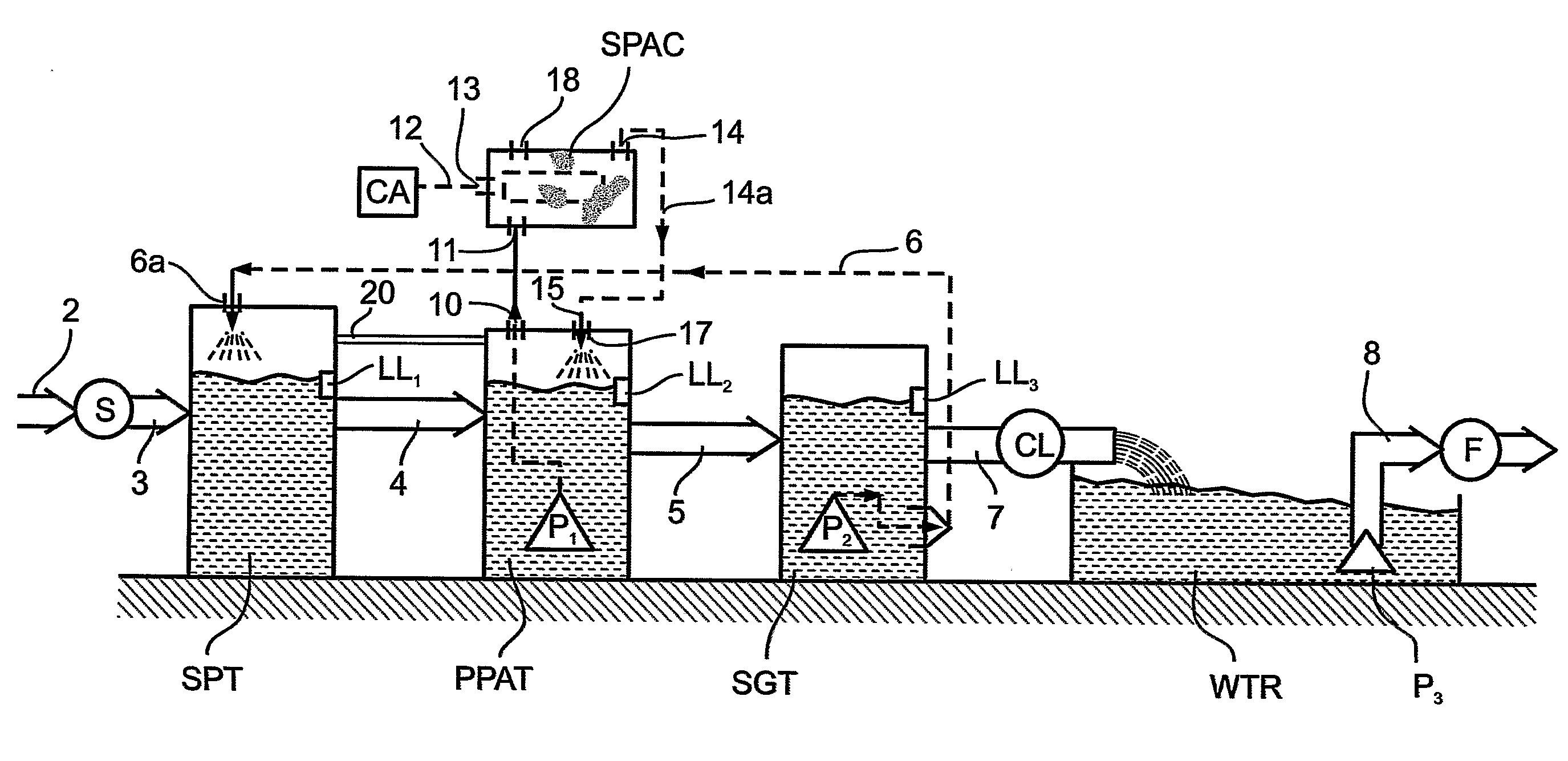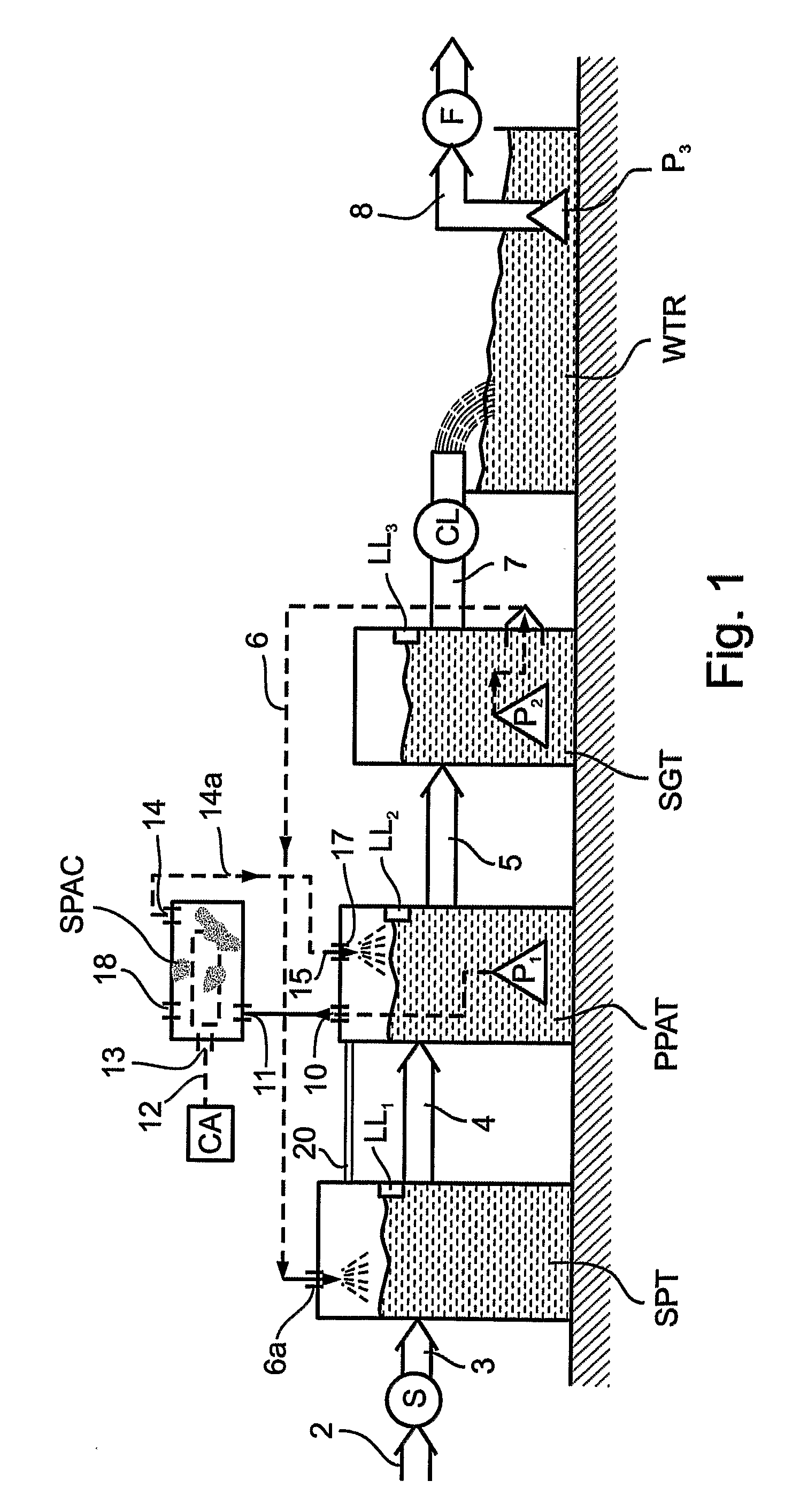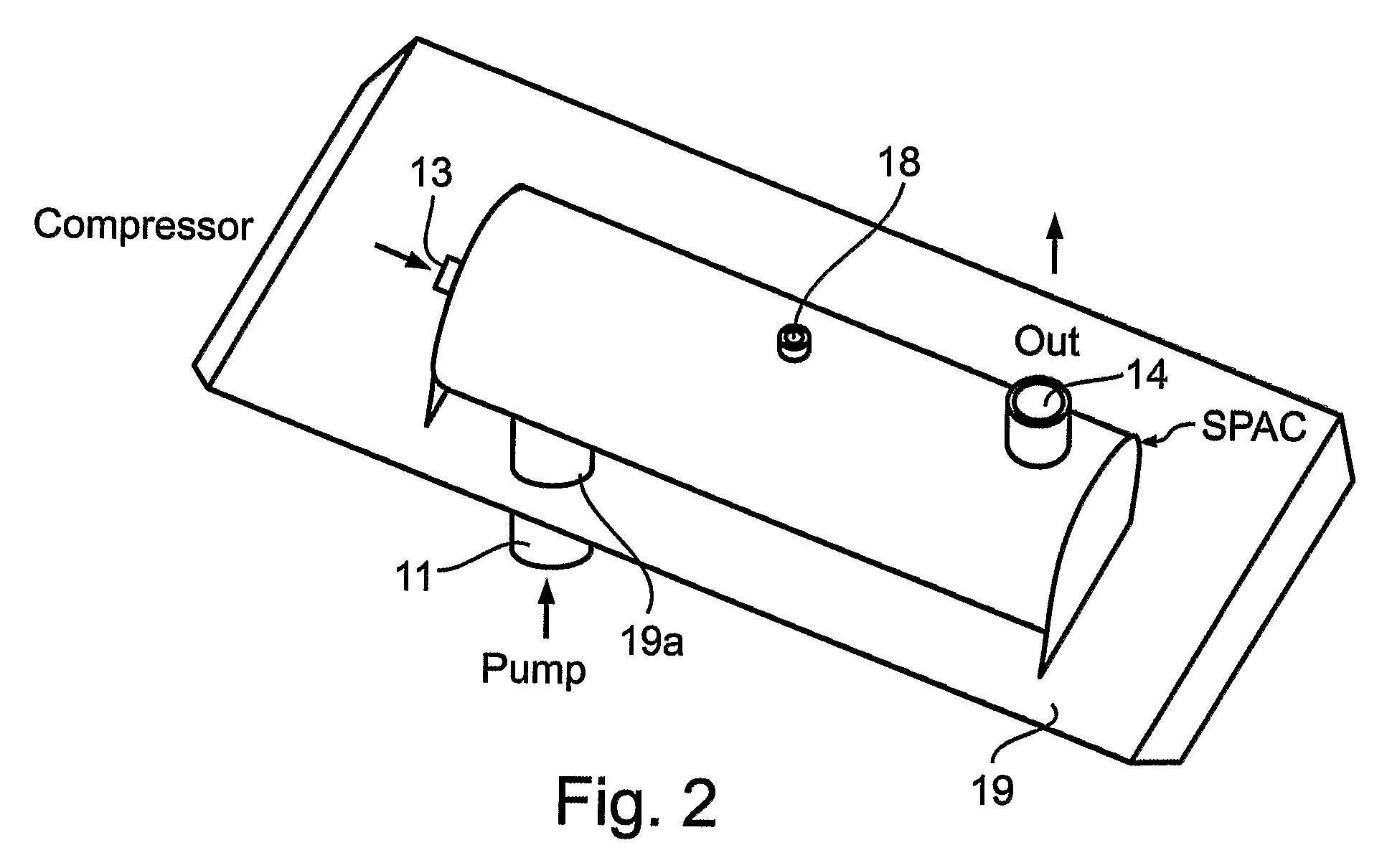Aerating Wastewater for Re-Use
- Summary
- Abstract
- Description
- Claims
- Application Information
AI Technical Summary
Benefits of technology
Problems solved by technology
Method used
Image
Examples
Embodiment Construction
Overall System
[0024]As indicated earlier, the system illustrated in the accompanying drawings as a preferred embodiment of the present invention is particularly useful as an onsite wastewater treatment system for use in residential and small commercial applications, since such a system can be built in a relatively compact manner at a relatively low cost. For example, the illustrated system can be constructed to process from 1-15 cubic meters (250-3750 gallons) of wastewater per day for re-use, e.g. for irrigation purposes. It therefore is particularly suitable for rural areas or places without central sewage systems.
[0025]In the system illustrated in FIG. 1, the wastewater to be treated is applied via an inlet conduit 2, a screen S, and a conduit 3, to a conventional septic tank SPT. From the latter tank, the wastewater flows via conduit 4 into a primary pressurizable aeration tank PPAT, a portion of which is pumped by a pump P1 to a secondary pressurizable aeration chamber SPAC As ...
PUM
| Property | Measurement | Unit |
|---|---|---|
| Pressure | aaaaa | aaaaa |
| Volume | aaaaa | aaaaa |
| Gravity | aaaaa | aaaaa |
Abstract
Description
Claims
Application Information
 Login to View More
Login to View More - R&D
- Intellectual Property
- Life Sciences
- Materials
- Tech Scout
- Unparalleled Data Quality
- Higher Quality Content
- 60% Fewer Hallucinations
Browse by: Latest US Patents, China's latest patents, Technical Efficacy Thesaurus, Application Domain, Technology Topic, Popular Technical Reports.
© 2025 PatSnap. All rights reserved.Legal|Privacy policy|Modern Slavery Act Transparency Statement|Sitemap|About US| Contact US: help@patsnap.com



